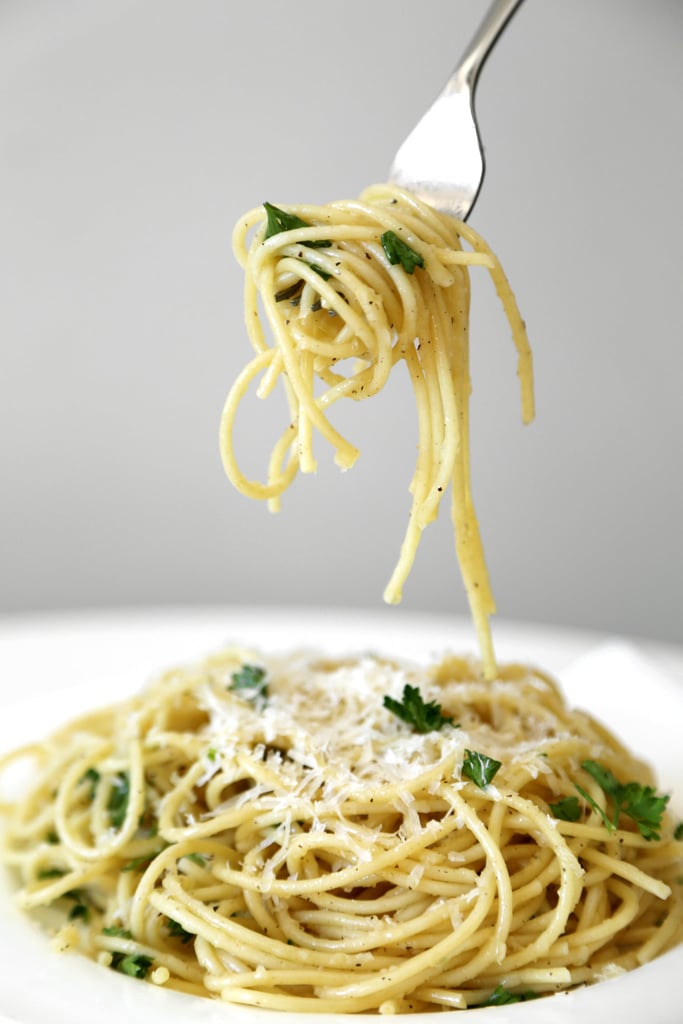

If you were to cut the noodle in half, you should see a slight variation in the middle of the pasta that isn't completely hydrated.This is How To Cook Pasta Al Dente. What you're looking for in a perfectly al dente noodle is a good chew with a slightly undercooked layer in the center. Most thicker pastas, especially artisanal ones like Setaro, should start getting checked after 9 to 11 minutes. A little noodle like Pastina or Orzo, check after about 8 minutes. Keep in mind how thick the pasta you're cooking is - if you're cooking a very thin pasta such as Angel Hair or Spaghettini, start tasting it after just 4 or 5 minutes. This is really the only way to fully tell that the pasta is ready. Swirl the water around with a wooden spoon or pasta spider every minute or two to ensure that even cooking. If the water temperature drops significantly and the boil halts, you'll want to ensure the pasta keeps moving around in the pot to avoid sticking. Right after you add that pasta, give it a stir to loosen up the noodles. It's also inevitable that the water temperature will quickly drop when you add in all that pasta - so if you try to cut corners and add the pasta in too early, you could be met with flat unmoving water and all that pasta will cook unevenly.
ALDENTE PASTA FULL
Waiting for that full rolling boil is so important - there's tons of movement in the pot, which means water is constantly circulating around each individual noodle, ensuring they get evenly cooked and nothing sticks to each other. If you're unsure, you can always check the temperature of the water - a rolling boil is 212 degrees F. You also run the risk of getting pasta stuck to the bottom of the pot if it isn't big enough.ĭon't get impatient when the water is just at a slow champagne-bubble simmer! A full "rolling" boil is obvious when you see it - it's the hottest that water will get, with large bubbles vigorously rising to the surface and bursting. If there isn't enough room, noodles inevitably stick together, and those pieces will cook at a slower rate. Giada always tells us, "pasta needs room to swim" - so if you cook pasta often, it's worth getting a big enough pot so that there's space for water to circulate between the noodles. Who would have thought? So, here's how to reap all those flavor, texture and nutritional benefits!

Overcooked pasta can block up your digestion, while a perfect al dente is digested more gradually - which prevents spikes in blood sugar. When pasta is slightly undercooked, the grains of starch get hydrated by the water without, all getting released away into the pot. Lastly, there's actually a nutritional reason behind al dente pasta as well.

A bite of mush is, quite frankly, not as satisfying! Chewy, and firm enough to stand up to all sauces, ragus and veggies you may be serving it with - that's the goal. Secondly, from a taste and texture perspective, pasta is simply meant to have some bite to it. Cooking the pasta until al dente ensures that it won't turn to mush during this phase (and if you're going to be cooking the pasta al forno (aka, in the oven) you may want to cook it even less!) First and most importantly, most recipes require further cooking of the pasta in a sauce. Essentially, it means the pasta is just slightly undercooked in the center. There are three main purposes for cooking pasta this way. Virtually every pasta recipe by Giada mentions "al dente," but what does it really mean? It translates to "to the tooth," and it describes pasta that still has a firm bite. Giada has already given us her helpful do's and don't's for cooking pasta, but we're going to take it a step further by explaining just how to ensure you cook that pasta perfectly al dente - and no, it does not include throwing your spaghetti on the wall! (If it actually sticks to the wall, it's overcooked!) Cooking pasta is a very simple culinary task, but there is a lot of nuance in each of those steps. Cooking pasta to that perfect al dente is simple - just follow these easy tips!īoil water.


 0 kommentar(er)
0 kommentar(er)
